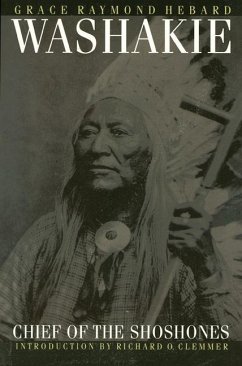Washakie was chief of the eastern band of the Shoshone Indians for almost sixty years, until his death in 1900. A strong leader of his own people, he saw the wisdom of befriending the whites. Grace Raymond Hebard offers an engaging view of Washakie's long life and the early history of Shoshone-occupied land-embracing present-day Wyoming and parts of Montana, Idaho, and Utah. Washakie is seen signing historic treaties, aiding overland emigrants in the 1850s, and finally assisting whites in fighting the Sioux. According to Hebard, Washakie's role in the battle on the Rosebud in June 1876 saved General Crook from the fate that befell General Custer eight days later on the Little Big Horn. Grace Raymond Hebard (1861-1936) wrote the two-volume Bozeman Trail (Nebraska 1990). The introducer, Richard O. Clemmer-Smith, is a professor of anthropology at the University of Denver and the author of Roads in the Sky: Economic Change and Cultural Continuity among the Hopi.
Hinweis: Dieser Artikel kann nur an eine deutsche Lieferadresse ausgeliefert werden.
Hinweis: Dieser Artikel kann nur an eine deutsche Lieferadresse ausgeliefert werden.


![Letter From John Ross, the Principal Chief of the Cherokee Nation, to a Gentleman of Philadelphia [i.e. Job R. Tyson]; Volume 2 Letter From John Ross, the Principal Chief of the Cherokee Nation, to a Gentleman of Philadelphia [i.e. Job R. Tyson]; Volume 2](https://bilder.buecher.de/produkte/68/68744/68744297m.jpg)




![The Indian Chief [microform]: an Account of the Labours, Losses, Sufferings and Oppression of Ke-zig-ko-e-ne-ne (David Sawyer), a Chief of the Ojibb The Indian Chief [microform]: an Account of the Labours, Losses, Sufferings and Oppression of Ke-zig-ko-e-ne-ne (David Sawyer), a Chief of the Ojibb](https://bilder.buecher.de/produkte/66/66145/66145851m.jpg)
